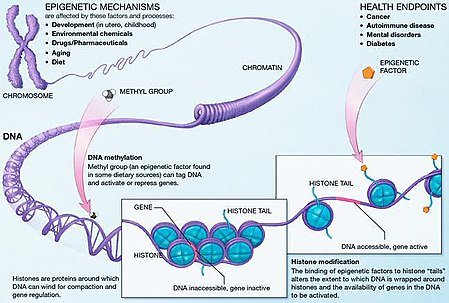Meaningful Environmental Awareness

To most people, environmental awareness is all about global warming, or climate change, as it is now known. The central theme is that increasing levels of atmospheric CO2 will inevitably lead to disastrous changes in weather patterns that threaten the future of the planet and its ability to support human life. Since burning fossil fuels is the main source, labelling CO2 emissions as the problem has many knock-on implications. In a nutshell, human activity and development, and therefore human beings themselves, become the problem.
The solution to reducing CO2 emissions has similar knock-on implications. It necessarily requires limiting industrial activity and the consumption of material goods as well as global population reduction to achieve a smaller 'carbon footprint'. This whole picture of the problem and the solution rests on one very questionable assumption.

The view from outside the Matrix is very different. Using CO2 as the murder weapon, humanity is being framed as the culprit destroying the environment. However, if we look at the facts this amounts to getting hold of the wrong end of the stick. It is pollution of the environment that threatens both humanity and the planet. Individual human beings are not generally a threat to the environment, but the environment can be a very real threat to human beings. Governments and their nefarious activities threaten both!
There is a pressing need to identify a genuine environmental awareness rooted in the facts, that will not only serve individual human health but also save the planet. A self-centered approach focusing on our individual personal health requirements constitutes a win-win environmental awareness as opposed a ‘bolt on’ additional burden of concern.
Pollution versus CO2
Pollution is undesirable and to be avoided - whether in the form of exhaust particulates from internal combustion engines or the pernicious and far-reaching effects of the plant killing substance called Glyphosate. However, increasing levels of atmospheric CO2 cannot rationally be considered undesirable, given the evidence showing it is essential for plant life (and therefore human life) and the lack of evidence showing it to be a problem.
If we take human life as the rational standard of value, that which supports it is 'the good' and that which destroys it, negates it or undermines it, is logically the evil. For clarity, it is reasonable to conclude that substances which cause ill health are anti-life and therefore evil (in a secular sense of the word) and substances that support human life are not.

Vegetable growers and horticulturalists have known for many decades that increasing the level of CO2 in polytunnels helps plants to grow and therefore produce more crops for human consumption. A few years ago Ranga Myneni of Boston University suggested the concept of global greening when he presented an ingenious analysis of data from satellites that showed a 14% increase in green vegetation across the planet in the past 30 years. Matt Ridley presented this information in an article in the Spectator magazine that you can read for further information. According to Patrick Moore, scientist and former president of Greenpeace, the ideal level of atmospheric CO2 for plants is about 1400 parts per million. The current level is around 400ppm and it is known to have been much higher than this in the past without the destruction of the planet!
Anthropogenic global warming is a major duff steer that does not stand up to scrutiny. It is not in doubt that CO2 has some greenhouse warming effect, but this is an isolated effect that does not take into account the many other complex variables in the atmosphere. It is certainly not a legitimate cause for all the alarmist scaremongering and miseducation of our children that is currently taking place. Together with the bogus hockey-stick graph and the ‘climategate’ emails controversy, there is plenty to chew on for enquiring minds.

Geoengineering
What is geoengineering? It is potentially the most environmentally damaging practice on the planet. It is a deliberate large-scale intervention in the earth's natural systems to counteract alleged climate change. It is no secret and no conspiracy theory. Read what the BBC has to say about it here. It involves solar radiation management (SRM) and Carbon Dioxide Removal (CDR) as the two main strategies of intervention.
Those who profess to be environmentalists are conspicuously silent on the issue. The mainstream narrative prefers to use the word 'Chemtrails' which is easy to dismiss but avoids open discussion of the scientific terms. This outrageously unethical allegedly scientific practice should rightly be in the headlines of meaningful environmental awareness. Firstly, populations are not consulted before spraying various metals and polluting substances into the upper atmosphere. Secondly, the entire practice is based on the false assumption of CO2 as being undesirable, and thirdly the negative and harmful effects of this process are ignored. Geoengineering is a dangerous non-solution to a non-problem. Legitimate environmental awareness must include knowledge of this issue.
Epigenetics
Since the 1950’s it has been believed that our genetic inheritance was the ultimate controller of our physical health outcomes. The human genome project eagerly set about identifying every gene in human DNA. They anticipated that each gene was responsible for producing one particular protein (the building blocks of the body) and therefore that they would number roughly 200,000 but they found only about 25,000. It turns out that each gene can potentially produce many different essential proteins for the body. Most importantly, the process of selection of which protein is created is controlled by the environment. Furthermore, genes can be switched on or off by the environment.

Stem cell research
Stem cells are undifferentiated human body cells that have the potential to differentiate into specific cells - such as skin cells, hair cells or muscle cells. As far back as the 1960’s genetically identical human stem cells were placed in Petri dishes simulating different human body environments. They were observed to grow into different specific body cells determined by their environment. Cells react to their environment, and this understanding is crucial to achieving health. We are not helpless victims of our genetic inheritance after all.
The environment is key
So to zoom back for a moment, the environment is king. It is the determining factor in human genetic expression and human health. Given that our personal health is determined by our body cells getting what they need and not being poisoned, our personal environment is crucial to our health. Environmental awareness must, therefore, begin with an appreciation of this fact.
Begin at the beginning
When we understand that our environment directly affects our own health outcomes on a personal cellular level, environmental awareness becomes meaningful and not just an unnecessary burden of responsibility. You have to be self-centred in the literal sense of the word in order to take care of your body, and because health is a prerequisite for enjoying life it is in everyone's self-interest to do so.
Rational self-interest
As a pilot, I knew that if I got myself safely down on the ground, I necessarily ensured the safety of everyone else on board. But if I were to concern myself directly with everyone else, it would only undermine my efforts and distract me from the priority at hand – safely landing the plane. Similarly, we are all familiar with the aeroplane decompression scenario and the relentlessly repeated advice to put on your own oxygen mask first before helping others – otherwise, you risk being unconscious in a matter of seconds, to the detriment of yourself and those you would seek to assist.
How would it be possible to take personal responsibility without being rationally self-centred? Rational concern for one’s self need not necessitate disregard for others. On the contrary, it consistently benefits others, as can be seen in this specific example of environmental awareness. The key word here is rational.
Our internal environment
Generally speaking the environment for body cells is the blood, and the main factor in determining its composition is diet. This is why what we eat is so important, along with a healthy gut full of the right bacteria that influence and control the switching on or off of specific genes. Take a moment to think about the implications of this. Microbes in the gut can activate or deactivate individual genes and affect which particular proteins are made from a huge range of options.

Monsanto’s glyphosate is the main constituent of almost all weed killers currently on the market. They are called weed killers but in fact, they are plant killers, period. A weed is a plant that is growing in the ‘wrong’ place. Due to it being water-soluble glyphosate has the ability to steadily make its way into the environment as a whole via the water cycle. This means that in some locations even an organic crop has tiny amounts of contamination from the rain! In the gut, glyphosate stimulates the production of a protein called zonulin that plays a role in the permeability of the gut lining. Briefly, the inappropriate presence of zonulin opens up the gut lining for all comers to pass through. This is called leaky gut and it has disastrous consequences for our internal environment because it lets all sorts of things into our blood that should not be there.
Food
All this means that first and foremost in controlling our internal environment is the choice of what we eat and drink. Everyone can practice meaningful environmental awareness and do this. There is much to say about this subject, but most importantly our food must not be toxic. It should nourish us and not poison us. The most important factor within our control in this respect is to choose to eat organically grown food. This means that our exposure to toxicity including glyphosate is reduced (not eliminated) and it also uses our consumer power in the marketplace to shift demand towards supporting farming practices that do not poison the wider environment. Empower yourself, take control of your destiny and your health, and start with your diet.
Teeth
Internal environmental awareness also means concern about the health impact of our dental care. If there are mercury amalgam fillings in your mouth they are a constant source of mercury poisoning in your body. The amount of mercury vapour released from filled cavities increases during chewing or drinking hot drinks. Mercury is a neurotoxin that has no place in the human body, any fillings containing it should be removed – and removed safely. The British Dental Association will tell you (via your conventional dentist) that the mercury in your teeth is safe, yet as soon as it is on the work-bench at the dental surgery it must be treated as a hazardous waste by ‘health and safety’ law! This obvious contradiction should give you a clue as to the truth.
A root canal procedure is a common method of dealing with a dead tooth without removing it. It is understandable that people are reluctant to have a tooth pulled out, but leaving a dead tooth in your jaw is a huge load on the immune system and has negative consequences for overall health. The structure of the root of a tooth is an intricate labyrinth of tiny tubes and spaces that are an ideal home for bacteria. Unfortunately, it is pathogenic bacteria that make it their home. They live in the dead tooth and proliferate. As the community grows the bacteria excrete toxins that find their way into the bloodstream. Your immune system is subsequently redirected from its primary purpose of protecting you from external disease-causing organisms and has to continuously deal with this internal problem of neutralising toxins originating from inside your jaw.

The external environment
The skin is the largest organ of the body averaging 20 square feet for an adult. It is a permeable layer allowing two-way traffic in the processes of secretion and absorption. What you put onto your skin can end up in your blood and this is why some say that one should never put onto the skin something they would not be prepared to eat. The skin is our immediate contact with our environment, and due to its permeability, we must be aware of the quality of that environment and any potential toxicity. The same principle applies to the air we breathe.
factors to consider
Once we appreciate the importance of our environment to our own well-being and when we make the connection between the toxicity of our environment and developing a chronic disease, we can then use this meaningful environmental awareness to modify our lifestyle to our own healthy self-interest and towards the reduction of global pollution in general. It is well worth thinking about the following...
• Avoid chlorine and fluoride in the water of swimming pools, showers and baths
• Avoid toxic personal hygiene products for bathing and showering
• Use fluoride-free toothpaste
Then extend this consideration to what comes into contact with your skin and consider…
• Toxic perfumes and fragrances
• Toxic hairspray
• Toxic soaps and shampoo
• Toxic makeup, nail varnish and beauty products
• Toxic hair gel
• Toxic makeup remover
As we move further out extending our circle of concern consider the home environment…
• Toxic washing powder
• Toxic paint
• Toxic bedding and garments
• Toxic cookware
• Toxic carpets, air fresheners, cleaning agents, and detergents
• Toxic building materials
• Also, avoid smoking and using so-called air fresheners
Then, consider the immediate outdoor environment…
• Toxic weed killers and pesticides
• Toxic slug pellets
Environmental awareness in education
Within the Matrix of mind control school children are increasingly burdened with a concern for reducing levels of atmospheric CO2 and to modify lifestyle choices around this alleged priority. The doom and gloom predictions of computer modelling are considered a crystal ball predicting a calamitous future. For our children, this inevitably undermines the motive to think long-term and directly impacts the mindset of young people – what’s the point? At the same time, no education is provided about the real issues of environmental awareness presented above. In the media, there is much hype about runaway climate disaster scenarios but no alarm is raised as the farmers poison the landscape with glyphosate and other toxic chemicals, growing food in a way that renders it poisonous to those who would eat it.
Back-to-front priorities
There is merit in some of the issues raised by conventional environmental awareness advocates. It is indeed sensible to reuse things when appropriate, to avoid generating unnecessary waste and to reduce plastic bag use. But many of the strategies suggested by the conventional view are questionable beyond the fixation with the underlying CO2 issue. One of the distinguishing features of the Matrix is the mixing of truth with fiction, and these days our greatest challenge is to discern between the two with rational thinking.
Under the banner of saving energy (reducing CO2) conventional environmentalists advocate replacing non-toxic incandescent light bulbs with either a fluorescent or LED alternative. However, it must be noted that a fluorescent light bulb contains a small amount of mercury – about 3-5 milligrammes – which is essential for it’s functioning. The problem occurs when they are disposed of and/or broken. It is an inescapable fact that widespread use of mercury whether in fillings or light bulbs constitutes ultimately spreading a toxin into the wider environment. LED bulbs contain small amounts of lead and arsenic and a few other toxic chemicals, but also the quality of light they emit can undermine human health. Visit this article by Dr Joseph Mercola to see why. The point here is that considered rational enquiry would seem to point to full spectrum incandescent light bulbs as being the best choice, yet they are being phased out. Is this meaningful environmental awareness?
It is well worth planting trees for many reasons. They are both beautiful and a useful plant crop. But planting them because you think it will save the environment is flawed thinking. You could say the same for avoiding mindless excessive consumption as well as for recycling old and used items. Beyond this muddled thinking – or lack of thinking – some ideas put forth by environmentalists are potentially harmful to human health. The advice to follow a vegetarian or vegan diet falls into this category. While it may be true that a very few people can survive on such a diet, almost all of us require some animal fats from appropriately reared (non-CAFO, grass-fed, organic, etc) animal based products in order to maintain health.
One of the most ludicrous suggestions I have come across is to observe an Eco-Sabbath: "For one day, afternoon or hour a week, don't buy anything, don't use machines, don't switch on anything electric, don't cook, don't answer your phone and, in general, don't use any resources." You could logically add "don’t breathe" to this list since breathing emits CO2!
The BIG issue
When we know how the environment affects our health outcomes we cannot ignore pollution. When we begin to think for ourselves instead of swallowing the mainstream narrative without critical enquiry, we see that the greatest threats to the environment are anti-human and anti-life. Environmental pollution with toxic chemicals that harm us is the understated problem. Whether on a global scale as with geoengineering, or toxic chemicals like glyphosate being used to grow food. The result is an increasingly toxic landscape that spells bad news for us all.
Conclusion
Mainstream environmental awareness is back-to-front and is anti-human. From outside the Matrix, the truth is this: Meaningful environmental awareness is rooted in rational self-interest, in human health and survival. Pollution in all its forms is the real problem, where as increased CO2 levels benefit all life. It is at best questionable to talk of restricting human economic activity and development and to advocate non-use, non-activity and non-production. It is rational and sensible to produce, be active and to thrive in ways that do not pollute our bodies or our beautiful planet.
Please comment below and join the conversation
Lawful Rebel, September 2018